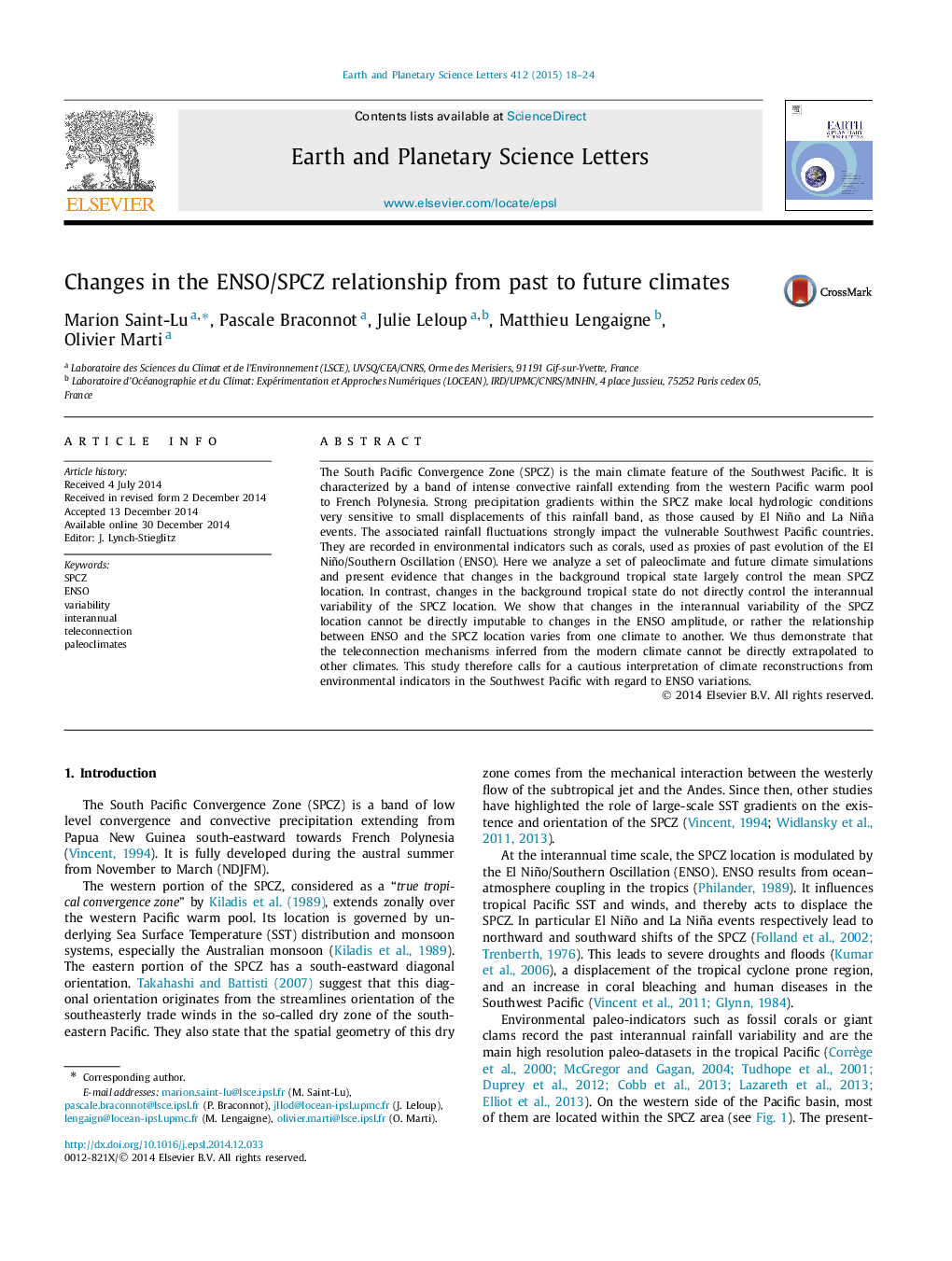| Article ID | Journal | Published Year | Pages | File Type |
|---|---|---|---|---|
| 6428626 | Earth and Planetary Science Letters | 2015 | 7 Pages |
â¢Fossil corals interpretation is limited by the fact that the SPCZ is not fully constrained by ENSO.â¢SPCZ variability and its response to ENSO were different in the past and will change in the future.â¢Calls for a careful interpretation of climate archives from this area in terms of ENSO.â¢Raises questions concerning the future of the affected islands.
The South Pacific Convergence Zone (SPCZ) is the main climate feature of the Southwest Pacific. It is characterized by a band of intense convective rainfall extending from the western Pacific warm pool to French Polynesia. Strong precipitation gradients within the SPCZ make local hydrologic conditions very sensitive to small displacements of this rainfall band, as those caused by El Niño and La Niña events. The associated rainfall fluctuations strongly impact the vulnerable Southwest Pacific countries. They are recorded in environmental indicators such as corals, used as proxies of past evolution of the El Niño/Southern Oscillation (ENSO). Here we analyze a set of paleoclimate and future climate simulations and present evidence that changes in the background tropical state largely control the mean SPCZ location. In contrast, changes in the background tropical state do not directly control the interannual variability of the SPCZ location. We show that changes in the interannual variability of the SPCZ location cannot be directly imputable to changes in the ENSO amplitude, or rather the relationship between ENSO and the SPCZ location varies from one climate to another. We thus demonstrate that the teleconnection mechanisms inferred from the modern climate cannot be directly extrapolated to other climates. This study therefore calls for a cautious interpretation of climate reconstructions from environmental indicators in the Southwest Pacific with regard to ENSO variations.
